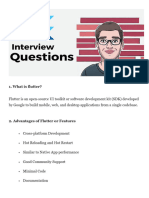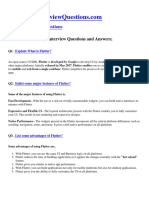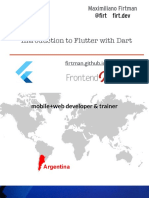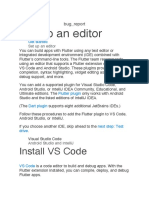0% found this document useful (0 votes)
6 views2 pagesFlutter Interview Questions Answers
The document provides a comprehensive list of Flutter interview questions and answers categorized into fresher, intermediate, and advanced levels. Key topics include Flutter's definition, Dart programming language, state management, and various Flutter concepts like hot reload, Navigator, and CustomPainter. It serves as a resource for candidates preparing for Flutter-related job interviews.
Uploaded by
akashprajapati6654Copyright
© © All Rights Reserved
We take content rights seriously. If you suspect this is your content, claim it here.
Available Formats
Download as PDF, TXT or read online on Scribd
0% found this document useful (0 votes)
6 views2 pagesFlutter Interview Questions Answers
The document provides a comprehensive list of Flutter interview questions and answers categorized into fresher, intermediate, and advanced levels. Key topics include Flutter's definition, Dart programming language, state management, and various Flutter concepts like hot reload, Navigator, and CustomPainter. It serves as a resource for candidates preparing for Flutter-related job interviews.
Uploaded by
akashprajapati6654Copyright
© © All Rights Reserved
We take content rights seriously. If you suspect this is your content, claim it here.
Available Formats
Download as PDF, TXT or read online on Scribd
/ 2


























































